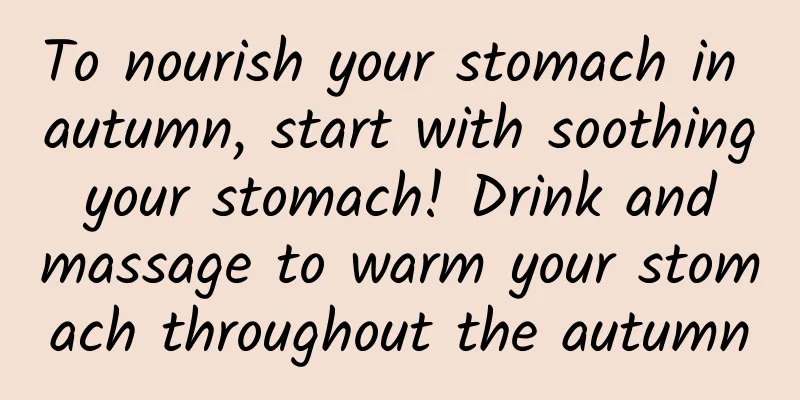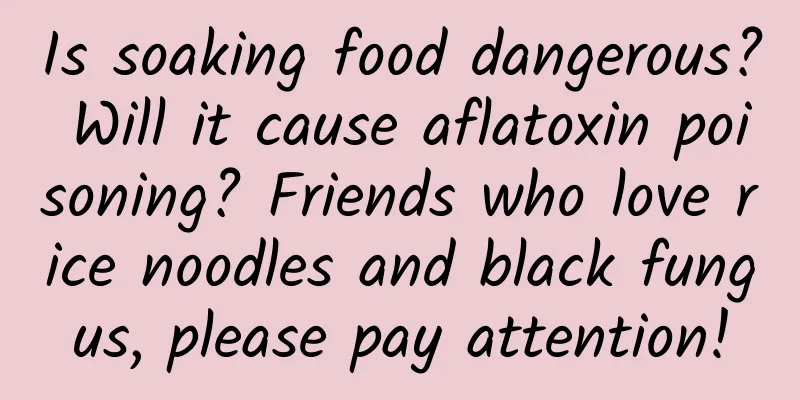Dietary guidance after pancreatitis

|
The pancreas is part of the human digestive system. It mainly secretes pancreatic juice to help the body digest food. Under normal circumstances, when eating begins, the exocrine cells of the pancreas secrete pancreatic juice, which is discharged from the pancreatic duct through the duodenal ampulla (sphincter dilatation) into the small intestine to participate in the decomposition of food. When acute pancreatitis occurs, abnormal activation of pancreatic enzymes in the pancreatic tissue causes an inflammatory response to the digestion of the pancreas itself and surrounding tissues, usually with local inflammation of the pancreas. In severe cases, it leads to tissue and organ dysfunction. According to surveys, the incidence of acute pancreatitis has been increasing year by year in recent years, with an incidence of (4.9-73.4)/100,000 and a mortality rate of up to 15-30%. Then someone may ask what is the specific cause of acute pancreatitis? Here is some popular science for everyone: the number one factor in my country is biliary pancreatitis. For patients with gallbladder and bile duct stones in the past, the cause of the disease is the persistent inflammatory stimulation that triggers the release of a large amount of trypsin and inflammatory mediators, which manifests as local inflammation of the pancreas, pancreatic vascular damage, and coagulation activation. More white blood cells adhere and infiltrate, aggravating the infection. The second largest cause is hyperlipidemia pancreatitis. When triglycerides exceed 11.3mmol/L, it is easy to cause serum microlipid droplets to embolize the pancreatic blood vessels and induce tissue ischemia and necrosis. The third largest cause is alcoholic acute pancreatitis, long-term heavy drinking (daily alcohol intake>40g, for more than 5 years). The cause of the disease is that alcohol stimulation causes continuous spasm of the duodenal papilla sphincter, resulting in increased pancreatic duct pressure. At the same time, pancreatic enzymes destroy the pancreatic duct epithelium, causing increased protein and calcium in the pancreatic juice, and the pancreatic duct is blocked and acinar tissue necrosis. Under the catalysis of a large amount of high-sugar diet, eating a lot of meat and drinking alcohol, and overeating in a short period of time, patients with the above causes will induce a series of reactions such as self-digestion, edema, bleeding, and necrosis of pancreatic tissue. Signs of pancreatitis 1. Abdominal pain The abdominal pain is mainly concentrated in the upper abdomen. Because of its location in the abdominal cavity close to the spine, it can also develop to the lower back and back. The initial paroxysmal pain quickly turns into repeated and continuous attacks. The degree of pain is severe pain like needles and knife cutting, which makes life worse than death. Those who have experienced it will never forget it for the rest of their lives. 2. Nausea and vomiting It is common in patients with acute pancreatitis. Usually, repeated nausea and vomiting can cause vomiting of food and bile, but the severity of abdominal pain cannot be relieved. 3. Fever This is a common manifestation of acute pancreatitis, which is often a moderate fever of 38-39 degrees or above, which usually decreases gradually after 3-5 days. However, if the fever persists for more than a week and the white blood cell count is elevated, secondary pancreatic tissue necrosis or bile duct infection should be considered. 4. Abdominal bloating Along with abdominal pain, nausea and vomiting, there may also be abdominal distension and even paralytic intestinal obstruction. 5. Jaundice A small number of patients with mild acute pancreatitis develop obstructive jaundice, with yellowing of the skin and eyelids, which is caused by compression of the common bile duct by the enlarged pancreatic head. 6. Hypotension shock It is common in severe acute pancreatitis, where a large amount of inflammatory substances seep into the abdominal cavity, causing an inflammatory storm, a decrease in effective circulating blood volume, a drop in blood pressure, a rapid and weak pulse, and shock. What is the most feared food for pancreatitis? 1. High-sugar foods Intake of large amounts of sugar in a short period of time can easily be converted into triglycerides. If a large amount of sugar is consumed in a short period of time, causing an increase in triglycerides, it can induce pancreatitis, such as fruit juice, chocolate, ice cream, milk tea, and cakes. There have been news reports that drinking a lot of sugarcane juice can induce pancreatitis. 2. Oily and meaty foods Fatty foods are rich in cholesterol. After eating a lot, the gallbladder and pancreas need to increase the secretion of bile and pancreatic juice. Overloading the pancreas can induce pancreatitis, so in the early stage and recovery period of pancreatitis, it is absolutely forbidden to eat: high-fat milk, fried foods (including: fried chicken, roast duck, fish fillet, steak, lamb chops, etc.), fatty meat, animal offal (especially crab roe), and cream cakes. In addition, patients with chronic pancreatitis are prone to diarrhea, that is, steatorrhea, if they eat a little oily and meaty food. For this type of patients who have turned into chronic patients, they should eat less fatty foods. 3. High-salt foods A diet that is too salty will increase pancreatic congestion and edema. Avoid eating foods such as pickled vegetables, salted fish, and bacon. 4. Spicy food Including: ginger, chili, pepper, garlic, onion, mustard, and alcoholic beverages. For normal people, eating them in moderation can strengthen the spleen and help digestion. However, for pancreatitis patients who already have gastrointestinal discomfort, eating spicy and irritating foods will undoubtedly make the situation worse, so try to avoid them. What is the best food to nourish the pancreas? 1. Grapefruit The pulp of grapefruit contains chromium, which is similar to insulin and can help lower blood sugar. People with pancreatitis can eat grapefruit pulp in moderation. 2. Strawberries Strawberries can relieve greasiness. People with pancreatitis may experience loss of appetite and aversion to oil due to indigestion. You can eat 1-2 strawberries before or after meals to relieve the symptoms. 3. Apple Apples contain polyphenols, natural antioxidants that can lower blood sugar and fight inflammation and kill bacteria. People with pancreatitis are afraid of eating acidic foods, so they can heat apples to reduce the acidity before eating. 4. Papaya The proteolytic enzymes contained in papaya help break down protein and starch and reduce the burden on the pancreas, so it can be consumed in moderation. 5. Egg White Boil the egg and remove the yolk. The egg white is a high-protein, low-fat food. It helps patients with pancreatitis to supplement protein during the recovery period. 6. Lotus root starch Lotus root powder has the functions of clearing away heat and cooling blood, relieving constipation and stopping diarrhea, and can also strengthen the spleen and stimulate appetite. It is low in fat and high in protein, and is the best food for supplementing nutrition for patients with pancreatitis during the recovery period. 7. Clear soup noodles In the early stages of pancreatitis recovery, patients need to eat liquid food. Rice soup and clear soup noodles are good choices. In general, patients with pancreatitis need to seek medical attention in time at the early stage of the disease and receive treatment under the guidance of a doctor. In the early stage, fasting is required to prevent the secretion of pancreatic juice. As the condition improves during the treatment process, it is advisable to eat light food in the later recovery and future diets, and choose foods rich in protein, fiber, and vitamins, such as: fish, chicken breast, lean meat, tofu, carrots, and broccoli. At the same time, the cooking method also needs to be adjusted to steaming, boiling, and oil-free air frying. Here, it is recommended that everyone must control their diet whether it is a normal dinner or a New Year's Eve dinner, and eat 70% to 80% full each time, and never overindulge! Author of this article: Wang Ying, Department of Gastroenterology, Fuxing Hospital, Capital Medical University |
<<: How to screen for early gastric cancer? Who needs screening?
Recommend
When can I get pregnant after I remove the ring?
Regardless of the entire process of inserting the...
Why does it suddenly feel itchy down there?
When you feel itching in your private parts, of c...
What is the cause of yellow leucorrhea with odor and vaginal itching?
Summer is here, and the symptoms of yellow leucor...
Is genital odor related to sex life?
When a fishy body odor comes out, it will make ma...
What is the difference between light oxygen eyebrow tattoo and mist eyebrow tattoo and traditional eyebrow tattoo? The harm of eyebrow tattoo and its solution
Eyebrow tattooing is a form of traumatic skin col...
Tremella and cabbage can nourish yin and moisten dryness
After autumn, the hot and unbearable weather is c...
Social Media Usage Behavior Survey Report in the Third Week of Ramadan in Indonesia in 2019
The change in traffic volume of social media usag...
Why does an ovarian cyst rupture?
Ovarian cyst is also a common gynecological disea...
Where does ovarian cyst hurt?
Ovarian cysts are a common disease in women. Most...
There is a small pimple on the wrist, be careful of ganglion cyst
Hard lumps on the wrists are a phenomenon that ma...
B vitamins are a good partner for weight loss. Supplementing them is also very simple. Just a handful of plant bird's nest is enough.
The human mindset is to leave the best to the nex...
Can the baby eat breast milk if the mother has a cold and fever?
If the mother has a cold and fever and is not tak...
Why do masks have odors? Are masks with odors harmful to the body?
We all know that masks are a kind of protective e...
A pile of granulation outside the female urethra
With the development of society. People are under...









